Truro Online Guide | Truro River Fal Cornwall
Truro
Online guide to Truro Cornwall
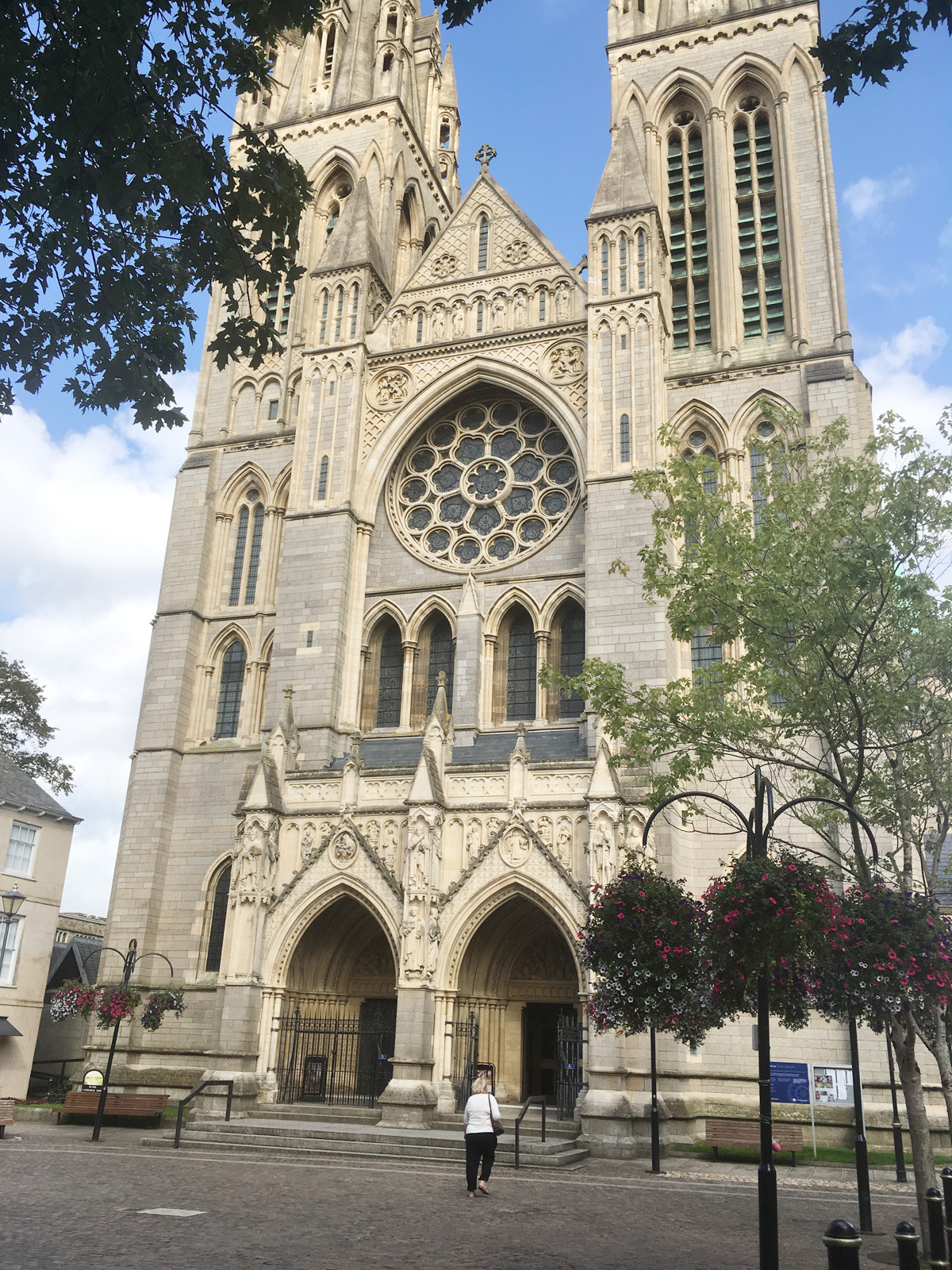
Truro Cathedral
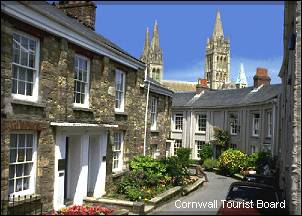
The Lizard Peninsula | Falmouth | The Roseland Peninsula | Truro | St Mawes | Veryan & Portloe | Tregony | St Just in Roseland | Gorran Haven | The Lost Gardens of Heligan | Mevagissey | Fowey | Charlestown | Portholland | Port Loe | St Austell |
Truro
Situated halfway along the length of Cornwall and mid-way between the country's north and south coasts, the city of Truro stands in a strategic position and one that has led to its development as Cornwall's centre of administration and its more recent growth as a touring and holiday centre. Its good road and rail links put it within easy reach of almost every part of Cornwall.
The city's natural position close to the confluence of the Truro and Fal rivers led to its early importance as both a port and a tin mining centre. As a port it was for centuries the rival of Falmouth for seaborne trade and it was, too, one of Cornwall's "stannary" towns where tin had to be brought for testing and stamping. Eventually the shipping trade was lost to Falmouth but tin and copper mining remained important until the 18th century, a period that saw Truro become Cornwall's centre of high society and home of numerous famous and wealthy people.

LOCAL ATTRACTIONS
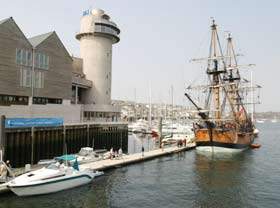
National
Maritime Museum Cornwall
- Falmouth
 Open 7 days a week
Open 7 days a week
'An experience
as alive as the sea'
A unique
and interactive displays of boats and their place in people's lives.
A maritime heritage colection exhibited over three floors (in 12 state-of-the-art
galleries), each focusing on different aspects of industry, work
and communications. The National Maritime Museum Cornwall has been
designed to create a wide appeal, offering a diverse range of 'hands-on'
displays and an unrivalled collection of boats - including many
in active use on the water.
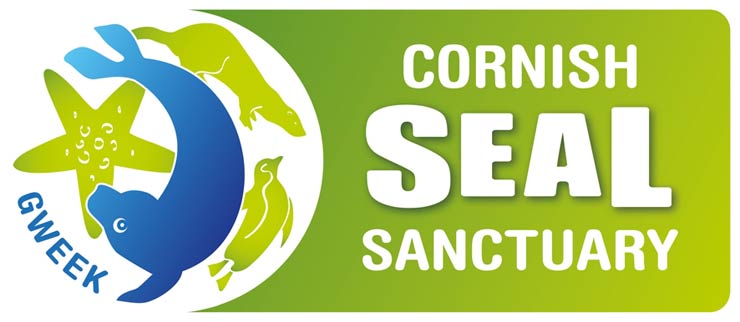

The
Cornish Seal Sanctuary -
- Gweek
The Cornish Seal Sanctuary - is set in the picturesque Helford Estuary, by the beautiful village of Gweek, in Cornwall.
The Cornish Seal Sanctuary is a busy rescue centre, and also has resident Grey Seals, Californian and Patagonian Sea Lions, Goats, Ponies and Otters.
In 1877, the ancient Cornish See was at last re-established with Truro as its centre. That year saw Truro become a Charter city and then three years later work began on building the cathedral, a task that lasted for thirty years.
Although not large by county town standards (it has an estimated population of 19,000) Truro has all the bearing of a county capital' with city, county and district council offices, and the new Crown Courts which opened in November 1988. The cathedral dominates the city centre in a quite remarkable way but does not detract from the charm of some of the George streets. One of the most interesting of the buildings is the museum and art gallery which houses a splendid collection, telling the story of both Truro and Cornwall.
Changes have tended to re-shape parts of central Truro in recent years and the city now has a range of newer industries, modern schools and one of the best shopping centres in the West. There are two busy covered markets to augment the shops and on Lemon Quay is the Creation Centre, an arcade of specialist shops beneath the same roof as the Pannier Market. On the outskirts of Truro in Newquay road is one of the most modern livestock markets that serve the whole of Cornwall.
With plenty of amenities for the full enjoyment of leisure and with, all around it, beautiful and historic Cornish countryside, Truro has a great deal to offer all who come to see it - be they tourists, intending residents or future industrialists. A warm welcome awaits them all.
The earliest references to Truro come, not from either the Roman or Saxon periods. but from Norman times. They constructed a castle here and it is from this, possibly, that the city's name comes - "Tre/ru" or the castle on the water, (although another theory is that the name is derived from the "three streets" - Tru-ru). The castle, long since vanished, belonged to the Earls of Cornwall.
Truro - An Historic City
By the middle of the 12th century a town was growing up in the shadow of the castle walls and in 1300 it was important enough to have its own Merchants Guild and to be one of Cornwall's centres for the official testing and stamping of locally mined tin. These were the "stannary" towns Truro, Lostwithiel, Liskeard, Helston and, much later, Penzance. All tin had to come to these towns to be tested, taxed and sold and this custom continued right through until the 18th century.
Truro was not only a 'stannary' town, however; it was an important river port with the advantage of being well away from the sea and thus well away from marauding invaders. Much tin and copper was shipped from its quays although it did suffer from periodic trade recession - one followed the Black Death which caused a huge exodus of local people and reduced Truro to a very neglected state.
With some government help trade returned to Truro and the city was prosperous throughout the Tudor period. In 1589 a fresh charter was granted by Elizabeth I and this gave Truro a measure of self-government with a mayor, six aldermen and eighteen burgesses. This charter also gave the mayor the right to control the harbour of Falmouth. Truro also had the right to send two members to Parliament, a right that was also held by five other towns within an eight mile radius.
Truro was greatly involved in the Civil War and in 1642 raised a sizeable force to fight for the King. The Royal set up their mint in Truro although was later moved to Exeter. In 1646 the city fell to Fairfax and Charles had to escape by way of Falmouth. This same century saw the rivalry between Truro and Falmouth reach a peak. Truro saw its tin and copper trade go to its neighbour and to other coastal ports. Falmouth received its charter in 1661 and it took control of the harbour and river although this was disputed until 1709 by Truro who tried to re-establish its own harbour rights. The Courts finally settled the matter with the Fal being divided between the two places.
Travelling through the area in 1662, the naturalist John Ray described Truro as a pretty town' but this view was not shared by Miss Celia Finnes who travelled this way in 1695. In her book "Through England on a sidesaddle" she referred to Truro as being 'ruinated and disregarded' .
However, the affairs of Truro took another turn for the better in the 18th and 19th centuries. Improved mining methods and higher prices for tin brought increased prosperity and Truro became the natural centre for those who made their fortune on the mines profits. Elegant houses were built for the mine owners' families and the Assembly Rooms echoed to the music and colour of balls and other functions.
Another traveller, this time Robert Southey, came here in 1802 and found Truro to be 'clean and opulent' with superb shops in its main street.
Throughout this period Truro remained a social centre and was home, too, of several noteable people Dr John Wolcot, a noted literary figure lived here for some years; the Rev. Richard Polwhele here wrote his "History of Cornwall" whilst Samuel Foote, the actor, was born at a house in Boscawen Street in 1725. Another local man, Henry Martyn, became . missionary in India and translated the New Testament into both Hindustani and Persian. Richard Lander, 1804/83 and his brother John, 1807/39, were born at the 'Fighting Cocks Inn', late called the Dolphin Inn, Truro. When he was eleven, Richard sailed on s merchant ship to the West Indies returning to England in 1818, when he lived as a servant in the homes of various wealthy families, even visiting Europe with some of them. In 1823 he went to the Cape of Good Hope, but returned in 1824, having visited much of the known world by the time he was twenty-one. He accompanied Lieut. H. Clapperton to West Africa in 1825 and when he died Lander collected all his papers and safely made his way back alone and, in 1830, he published an account of this expedition.
The British government sent him and his brother, John, to explore more of the lower Niger River, 1830/1, and they proved that the Niger flows through many mouths into the Bight of Benin. This they described in their Journal of an Expedition to Explore the Course and Termination of the Niger, published in 1832, by which time they were on their second voyage of exploration. On Richard's third expedition he was was mortally wounded by the natives and died at Fernando Po, but the course and outlets of the Niger had a been finally settled by the expedition. Richard was called by the Africans "Nasarah Curramaee", meaning "Little Christian", but though small he was daring. He named an island in the Niger River, Truro, and a hill on its bank, Cornwall Mountain. A memorial column stands at the top of Lemon Street, Truro.
Through the 19th century Truro increased in importance and by the 1830s it had a population of 3,000. It had works to smelt the local tin; it had an iron foundry, potteries, tanneries and both wool and carpet mills. The Great Western railway built their line through Truro, although in the early days trains through Cornwall called at all stations and were slow in the extreme. Through carriages to London's Paddington station came in 1867 but the journey was still very slow - in the order of twelve hours! And there were no such things as dining cars!
Kind words were said of Truro by the noted diarist curate, Francis Kilvert, when he came here in 1870. He later sailed from Truro quay and described his journey down river between "steaming mud banks and sand flats". Six years later Truro became the centre of the new diocese and the following year, 1877, saw it raised to the status of a city (although the building of the cathedral did not start until 1880).
The early years of the present century saw the virtual end of tin mining and the closure of several other local industries. The city, however, continued to grow as an administrative and commercial centre and gained something of a reputation as an educational centre. In more recent times it has gained popularity as a touring centre.
Since 1974 Truro has been a part of the larger Carrick District but the Truro City Council, which controls mainly local matters, carries on the traditions of "local rule" which have existed since Norman times.
Truro Cathedral
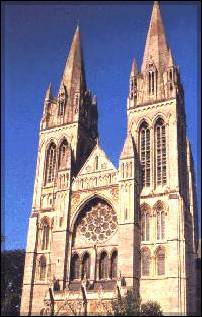 Although
Truro has one of this country's newer cathedrals, the See of Cornwall
dates back to earliest times when it was located at St. Germans and was
united with the See of Devonshire. The 19th century saw a move to separate
the two counties and in 1876 the Diocese of Truro was created, with Dr
Benson as its first Bishop, who at once set about raising funds for a
cathedral. Whilst fund collecting went on, Dr Benson made use of the church
in the centre of Truro as his nucleus cathedral.
Although
Truro has one of this country's newer cathedrals, the See of Cornwall
dates back to earliest times when it was located at St. Germans and was
united with the See of Devonshire. The 19th century saw a move to separate
the two counties and in 1876 the Diocese of Truro was created, with Dr
Benson as its first Bishop, who at once set about raising funds for a
cathedral. Whilst fund collecting went on, Dr Benson made use of the church
in the centre of Truro as his nucleus cathedral.
Work started on the new building in 1880. It was the first cathedral to be built in England since London's St Paul's and Dr Benson thus wanted it to be new in ideas and style and not to be a slavish copy of other cathedrals in the country. He used the architect John Pearson who, at once, had a difficult task for the cramped site in the centre of Truro was so hemmed in by buildings that there was no chance to create a close around the building. Thus it was that the cathedral arose amid the shops and houses - a sheer and powerful building with its spires dominating all around it. The likeness to a cathedral of northern France is at once apparent.
The cathedral, which incorporated part of the original parish church, was completed in 1910 having taken over 30 years, but was consecrated in 1889. The planned cloisters were never built. Half a century later, in 1967, the Chapter House was added to give the Cathedral its present appearance.
The towers and spires of the cathedral are its major feature. The great central tower and spire rise to 250 feet and the western towers and spires reach 200 feet. The west front has a rose window in the gable and the porch is adorned with statues of the first three Bishops of Truro, Bishop Temple of Exeter and four of our monarchs.
The impression given by the interior is one of great height and length. It has the quality of a 13th century structure in the Early English style with the slender pillars and tiers of pointed arches taking one's eyes to the vaulted roof whose segments get smaller at the east end. The view of the east window behind the altar however is rather cut off by the massive and heavily carved reredos .
Differing in style, however, is St Mary's Aisle for this is part of the original parish church, typically Cornish with its granite walls and timbered barrel roof. Here there is an 18th century pulpit of inlaid wood and a 17th century organ designed by the famous Byfield. Different, too, is the Chapter House which, as previously stated, was built in 1967 and which includes a line of tall windows that, in their way, echo the windows of Pearson's Gothic work.
Individual features of the cathedral include the heavily carved Bishop's throne; the choir stalls; the large font of polished porphyry and the windows which were designed in sequence to tell a story - starting at the west end and finishing with the great east window.
Monuments include several that came from the original church of St Mary. In the north transept is an elaborate monument to John Robartes (1614) and his wife. Another is of Owen Phippen and was placed here w brother George, a rector of Truro. Owen was taken prisoner in 1620 by the Turks but escaped seven years later in a Turkish ship after a desperate fight between group of ten Christians and the crew of 651.

